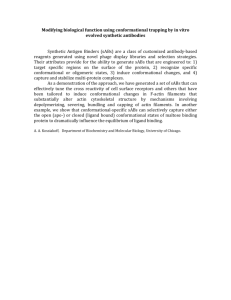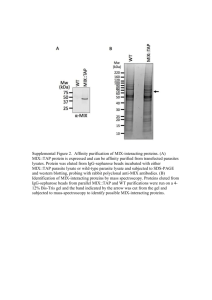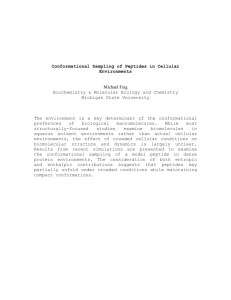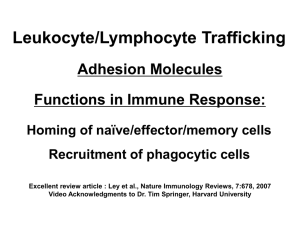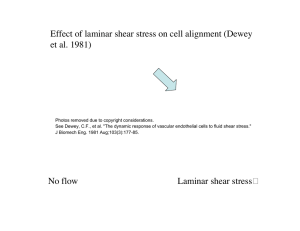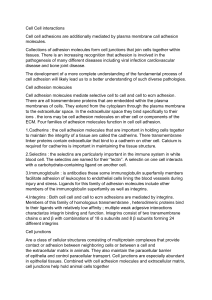Document 11325241
advertisement
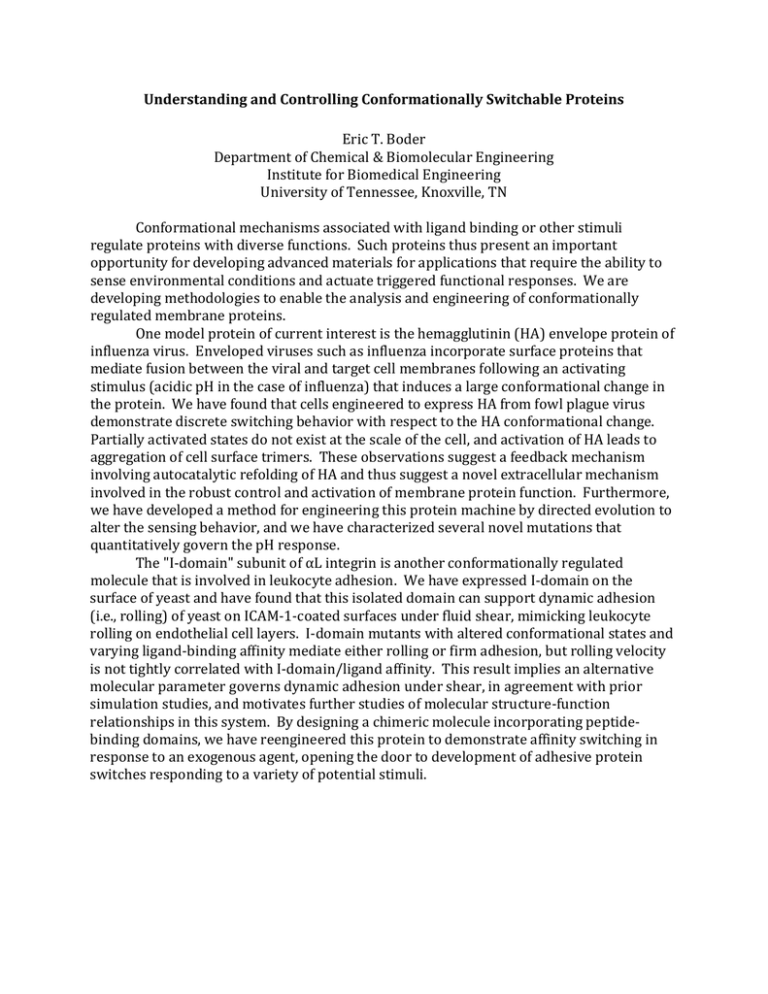
Understanding and Controlling Conformationally Switchable Proteins Eric T. Boder Department of Chemical & Biomolecular Engineering Institute for Biomedical Engineering University of Tennessee, Knoxville, TN Conformational mechanisms associated with ligand binding or other stimuli regulate proteins with diverse functions. Such proteins thus present an important opportunity for developing advanced materials for applications that require the ability to sense environmental conditions and actuate triggered functional responses. We are developing methodologies to enable the analysis and engineering of conformationally regulated membrane proteins. One model protein of current interest is the hemagglutinin (HA) envelope protein of influenza virus. Enveloped viruses such as influenza incorporate surface proteins that mediate fusion between the viral and target cell membranes following an activating stimulus (acidic pH in the case of influenza) that induces a large conformational change in the protein. We have found that cells engineered to express HA from fowl plague virus demonstrate discrete switching behavior with respect to the HA conformational change. Partially activated states do not exist at the scale of the cell, and activation of HA leads to aggregation of cell surface trimers. These observations suggest a feedback mechanism involving autocatalytic refolding of HA and thus suggest a novel extracellular mechanism involved in the robust control and activation of membrane protein function. Furthermore, we have developed a method for engineering this protein machine by directed evolution to alter the sensing behavior, and we have characterized several novel mutations that quantitatively govern the pH response. The "I-domain" subunit of αL integrin is another conformationally regulated molecule that is involved in leukocyte adhesion. We have expressed I-domain on the surface of yeast and have found that this isolated domain can support dynamic adhesion (i.e., rolling) of yeast on ICAM-1-coated surfaces under fluid shear, mimicking leukocyte rolling on endothelial cell layers. I-domain mutants with altered conformational states and varying ligand-binding affinity mediate either rolling or firm adhesion, but rolling velocity is not tightly correlated with I-domain/ligand affinity. This result implies an alternative molecular parameter governs dynamic adhesion under shear, in agreement with prior simulation studies, and motivates further studies of molecular structure-function relationships in this system. By designing a chimeric molecule incorporating peptidebinding domains, we have reengineered this protein to demonstrate affinity switching in response to an exogenous agent, opening the door to development of adhesive protein switches responding to a variety of potential stimuli.
